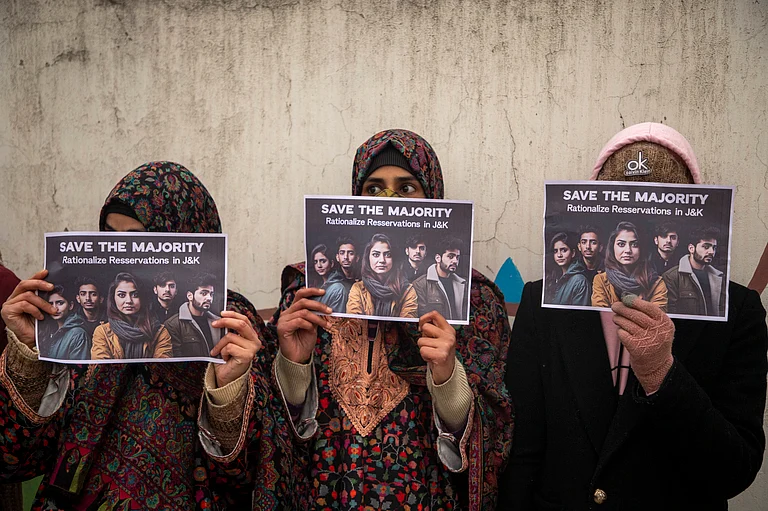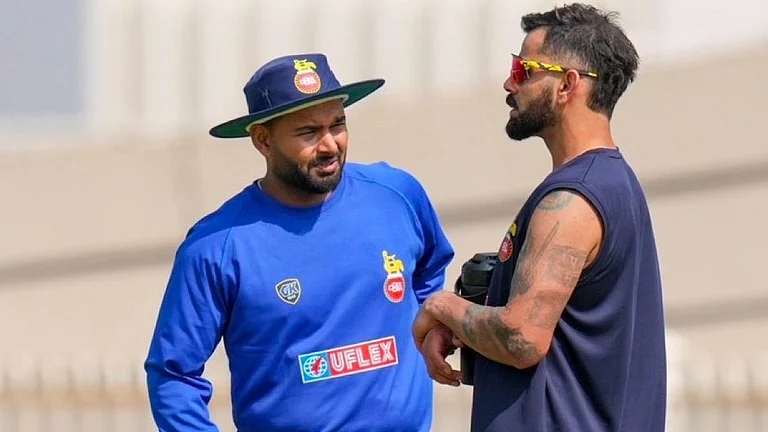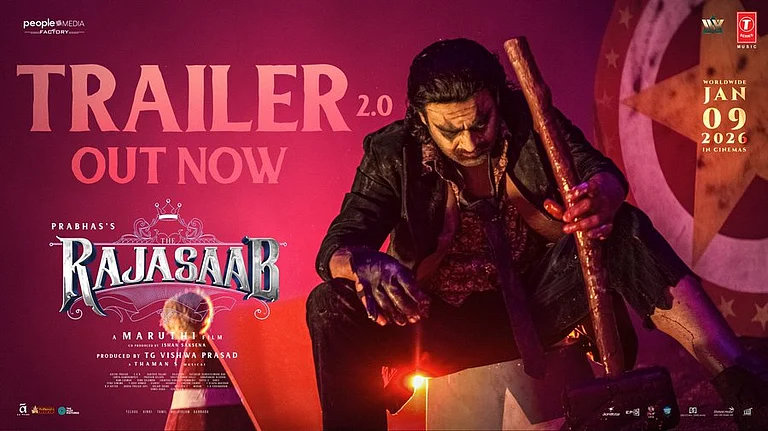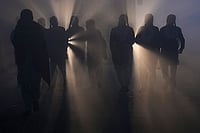A hundred and six years ago, an eccentric serial philanderer wrote whatremains the starting point for understanding the luxury goods market. ThorsteinVeblen may have been quirky, but his Theory of the Leisure Class was anastonishingly astute piece of economics. In it, he shows why conspicuousconsumption (he coined the term) is the underlying rationale of consumercapitalism.
Without going into theoretical detail, this explains why economists recognisefashion as an industry and not as attention seeking Page Three fecklessness. Itis also why a book like this is so important. Fashion is no exception to thecurse of smoke and mirrors; a documention of record, like this timely and wellproduced coffee table book, can be indispensable in separating the art from theartifice.
With Indian Fashion, though, it's a case of close, but no cigar.Sengupta might have done rather harder-edged writing in the past--he has writtenfor Newsweek and the Chicago Tribune--this book descends veryrapidly into hagiography. Page 10 begins with the following paean to RohitKhosla: "When the history of Indian fashion is written, the name of RohitKhosla...shall shine through as the man who showed the way. Modern Indianfashion industry owes this one man an infinite debt..." And so on.
Indian fashion owes Khosla a lot, but he was a pathbreaker because he wasfocused and worked uncompromisingly hard at his muse. The exaltation gives uslittle sense of why the man deserves respect. Instead there is the suggestionthat he was some sort of saint, which he most certainly was not. Such near heroworship continues for the next 246 pages, unfortunately. As a result the bookoften misses out on what is special about some of the people behind Indianfashion. Tarun Tahiliani comes across as a sort of orotund boulevardier only afew slippery steps away from comic caricature. But comic caricatures don't getinto the world's top business schools. Nor do they drive Indian fashionoverseas.
Rohit Bal features as a wild party beast. For less than one-thousandth thecost of this book, a newspaper will tell you that anyway. And the book tells younothing about the genius-level IQ that Gudda keeps well hidden under all thatqueenly swaggering--yes, it's physically possible. Likewise, there's little toshow of Abraham & Thakore's deep, intensely cerebral design sensibility. Infact both David Abraham and Rakesh Thakore are among the more articulate andthought-provoking spokesmen for design and fashion anywhere in the world.
It's a hard trap to avoid, but there are a few slightly puzzling inclusions.It's hard to see why Varun Bahl, to name just one, gets the same exposure asWendell Rodricks, easily one of India's finest designers. Or more pages thanAnshu, who's among a handful of designers like Manish Arora, Puja Nayyar andMalini Ramani (who doesn't make it into the book) who consistently push theboundaries of what defines Indian fashion? While many of the photographs aregorgeous, they ultimately disappoint. Since they have come from the designersand stores featured in the book, it means that you'll already have seen severalof them on Page 3. But it also means that while the clothes are generally seento good effect, the overall impact is manufactured in a way that falls wellshort of the perfection of a Cecil Beaton, the intriguing perversions of aHelmut Newton or the flawed genius of a Nan Goldin.
Moreover, it means that many of Rohit Bal's clothes are modeled by the manhimself. His manifest charms notwithstanding, the lasting image is that of adangerous roue with cheerfully evil designs on your body. Why, when thealternatives include Bharat Sikka's moody masterpieces of the delicious ArjunRampal? That's not too much to expect from a coffee table book that's intendedto be a definitive work.
Further, the choice of photographs weighs clearly in favour of the "overthe top" heavily embellished, detailed work that is often assumed to typifyIndian design. This makes sense with designers like Abu Jani & SandeepKhosla or Shahab Durazi who understand tradition, fashion and execution and soproduce fine art--an appreciation that Ritu Kumar also refers to in herforeword. But it isn't an entirely fair overall picture of Indian fashion, whilealso unnecessarily playing into the hands of critics who can't, or won't, seebeyond geographical boundaries to appreciate the transcendental appeal ofAbraham & Thakore or Rajesh Pratap Singh.
Easily the funniest reportage on the recent Lakme India Fashion Week was anarticle in a major US newspaper that savaged Indian fashion for its frippery. Itleft many thinking Indian designers aghast. Still, it was after all by the samereporter that Salman Rushdie wanted to physically alter with a baseball bat forcalling Padma Lakshmi a "semicelebrated hustler", according to the NewYork Metro.
The ideal book on Indian fashion would find a tone somewhere between suchempty censure and Sengupta's starry-eyed approval. Clearly this is not thatbook.
Because of constraints of space, a shorter version of this review appearedin the print magazine.


























